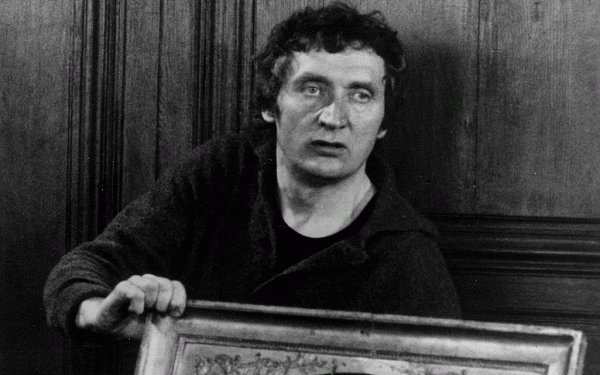
‘Master craftsman, Dadaist prankster, and unrepentant sensualist, Walerian Borowczyk and his films have yet to be both fully discovered and appreciated. Born in Poland during the 1920s, Borowczyk trained as a painter and sculptor before establishing himself first as a poster artist and later an animation filmmaker. Having relocated to France during the late 1950s, Borowczyk produced a succession of startling, often comic short films that were as innovative as they were provocative. When Borowczyk made the transition to feature films, he joined the ranks of the titans of world cinema.
‘Not only was Borowczyk a trailblazer for fine artists working in film but he also brought a keen, painterly eye to framing and editing objects, animals, and bodies. Expertly marrying film to both classical and electronic music, Borowczyk’s approach to cinema harked back to the silent days (Méliès, Keaton, Eisenstein) and even pre-cinema (Muybridge, chrono-photography, and zoetropes). From the outset, Borowczyk favored both fantasy and eroticism, tendencies in his work that became more pronounced with the relaxation of censorship. A sense of earthy humor masks a distinctly moral sensibility, eager to satirize the corruption of institutions, whether they be feudal, clerical, or bureaucratic.
‘Margolit Fox, in her 2006 New York Times obituary, wrote of Borowczyk that he was “described variously by critics as a genius, a pornographer and a genius who also happened to be a pornographer.” The problem with this assessment is that even at its most sexually explicit, and be warned, the work could get very sexually explicit indeed, Borowczyk never betrays a desire to arouse. His most notorious film, 1975’s The Beast, opens with a scene of unsimulated horse-mating, and ends with a dream sequence in which a maiden is ravished, in a variety of ways and positions, by a man-beast with a massive and rather silly-looking tool of reproduction that keeps spouting…well, you get the idea. I can’t imagine a human being finding such stuff genuinely stimulating in the way that pornography itself actually has to intend in order for it to be pornography (and no jokes about Comic-Con attendees and their predilections, please). So if Borowczyk’s not a pornographer, what is he?
‘Arguably the most controversial aspect of Borowczyk’s filmography is his approach to women. While his gaze is undeniably male and unashamedly voyeuristic, Borowczyk’s heroines are far from shrinking violets, often ready to toss off their corsets and use their sexuality as a means of transcending social constraints, while the men are left dithering between conflicting desires for physical gratification and public respectability. If Borowczyk’s erotic obsessions rendered him a marginal figure in the history books, then it is high time to reevaluate this remarkable artist’s major contribution to cinema.’ — collaged
___
Stills









































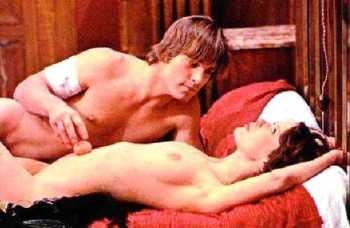




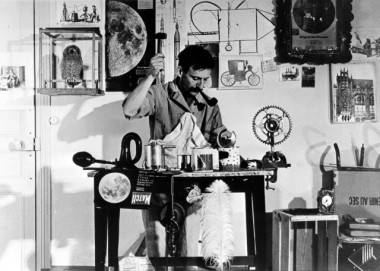










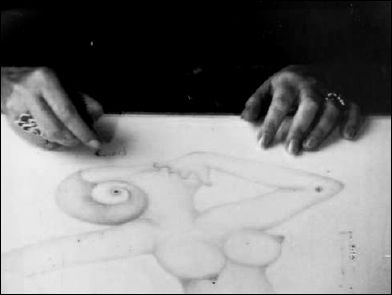



_____
Further
Walerian Borowczyk @ IMDb
FRIENDS OF WALERIAN BOROWCZYK
‘The Walerian Borowczyk Collection’
WALERIAN BOROWCZYK @ CULTURE.PL
‘Object Lessons: The Films of Walerian Borowczyk’
‘Walerian Borowczyk by Way of Daniel Bird’
WB @ Mondo Digital
WB @ MUBI
Obituary: Walerian Borowczyk
‘Walerian Borowczyk: The Motion Demon’
‘Movies Directed by Walerian Borowczyk: Best to Worst’
‘Installation view of Walerian Borowczyk: The Right to Be Forgotten’
‘Walerian Borowczyk’s Heroines of Desire’
‘Walerian Borowczyk: The Listening Eye’
Camera Obscura: The Walerian Borowczyk Collection # The Criterion Forum
‘WALERIAN BOROWCZYK – POSTERS AND LITHOGRAPHY’
‘The Artistry of Walerian Borowczyk’
‘The Ghost of Goto: Walerian Borowczyk Remembered’
‘The erotic fables of Walerian Borowczyk: A ’70s art-porn pioneer rediscovered’
‘Erotica and Subversion: The Films of Walerian Borowczyk’
‘Eastern European Animation Department — Renaissance (Walerian Borowczyk, 1963)’
‘TERRY GILLIAM TALKS WALERIAN BOROWCZYK RESTORATION’
‘Walerian Borowczyk: Nature or Culture?’
‘A Guide to the films of Walerian Borowczyk’
____
Extras
Love Express: The Disappearance of Walerian Borowczyk (trailer)
Obscure Pleasures: The Films of Walerian Borowczyk (trailer)
Daniel Bird introduces his new documentary on Walerian Borowczyk
Table Ronde autour de Walerian Borowczyk
_____
Interview
(with Daniel Bird)
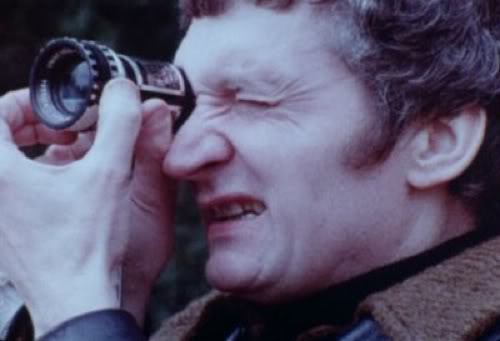
The main crux of your documentary film OBSCURE PLEASURES: A PORTRAIT OF WALERIAN BOROWCZYK (2013) is an interview Borowczyk gave in 1984. What was the original context for this interview, how did you find it, and what were the steps you had to go through legally to be able to manipulate and use it to make a new film?
Daniel Bird: The original context of the interview was a program about the Annecy Film festival (directed by Keith Griffiths) which was part of the Visions TV series (produced by John Ellis) broadcast on Channel 4. Peter Hames, who has written extensively on Czech and Slovak Cinema, gave me a typescript of the full interview back in 1996. (Peter was the programmer of my local Film Theatre in Stoke-on-Trent, where I first got to see Borowczyk’s short films, along with those of Lenica and Svankmajer). As is usually the case, only a tiny fragment of the interview was used in the program. Nevertheless, I think it is a unique document in that it is one of the few instances where Borowczyk is on camera answering a variety of questions about animation, the graphic arts, ‘Polishness’ and sex. I thought it would be a good idea to edit the rushes into a rounded portrait. John kindly gave me permission to access the rushes from the BFI National Film Archive and I had them transferred.
How much of the original interview was used, and to what extent was the line of questioning re-organized? I ask because when talking about animation, he is seated, comfortable, leaning on a table, whereas when he is asked about his erotic films, he is standing, in a more exposed fashion, against a white wall, and the questions take on an accusatory tone. It almost seems like a different interview because there is such a sharp contrast tonally and visually.
DB: First, it is important to say something about the context in which I edited the film. During the last couple of years I have been working on a project involving the digital transfer and restoration of Borowczyk’s short films and early features. These transfers have been financed by Arrow Films, with support from the Polish Cultural Institute in London with additional support from contributors to a Kickstarter campaign. From the outset, these restorations were envisaged as part of a box-set of Blu-rays and DVDs. While I think both IMMORAL TALES and THE BEAST are wonderful, I was concerned that they would overshadow Borowczyk’s early films, particularly the shorts. Therefore, Michael Brooke (with whom I co-produced the series) and I, set about devising supplementary features as well as a book designed to re-introduce Borowczyk, so to speak. It is not the case that Borowczyk’s films can be divided up into ‘animations’ and ‘sex films’ – these are just different facets of the same artist. This ‘portrait’ of Borowczyk is just one of the supplementary features designed to put forward the case. For me, it was essential to provide a platform for Borowczyk to talk about his films himself. To answer your question, In terms of how much of the interview was used, I would say about eighty percent. Besides the discussion of Annecy, the only section which was not used was a passage about computer animation. While fascinating in itself, it just didn’t fit. About the set up of the interview, I do not know why the questions about sex were filmed the way that they were. That said, I quite like the abrupt shift. To focus on the sexual aspect of Borowczyk is a bit like focusing on violence in Peckinpah’s cinema – yes, it is what made him infamous, but it was not just what he was about.
In the interview, Borowczyk claims to not really be influenced by much Polish art. To what extent do you believe this is the case? Both of them seem to say there is no surrealist tradition in Poland, that the art is more folkloric or pastoral, but if you look at the graphic arts from at least the 1960s onward – the famous Polish posters – that obviously seems to be untrue.
DB: I don’t think he was being deliberately evasive. There is a tendency to shoehorn artists into the traditions of their own country. Of course, these are influences, but they are not the only influences. Borowczyk, for example, trained in the post-impressionist style, and his satirical drawings are clearly influenced not so much by socialist realism as Daumier. Also, John Heartfield’s photo-montage clearly plays a role in some of his posters, as does Max Ernst. Norman McLaren is an obvious influence on his early films with Lenica, and, as I have already mentioned, Léger had a strong presence in Polish art during the mid 1950s. Borowczyk is right in saying that there is no formal surrealist tradition in Poland, like there was in Czechoslovakia. However, Polish art is often surrealistic. Witkacy, Schulz and Gombrowicz are the names which are the most important in this respect. Of course, Poland arguably had the strongest tradition of posters in Eastern Europe during the late 1950s and 1960s, however, I think the posters from all Eastern Bloc countries are very strong during this period. I think this was the result of three factors. First, the relative freedom of the ‘thaw’ period, second, an economic poverty which resulted in an aesthetics of poverty (not just in posters, but also films and theatre), and third, that these artists were not trained as graphic designers, but painters – they were familiar with not just the surrealists, but all sorts of other ‘-ists’. Borowczyk did, however, feel comfortable being associated with surrealism in France. He regularly adapted the work of Pieyre de Mandiargues, for example, and made a film about the Serbian painter, Ljuba (L’AMOUR MONSTER DE TOUS LES TEMPS – see video below). It is also worth remembering that the word, surrealism, was coined by Apollinaire, who was of Polish decent.
How are Borowczyk’s films looked upon in Poland, and has that changed over time?
DB: Traditionally, I think he was valued by his peers – painters like Jan Tarasin and Jerzy Tchórzewski, the Różewicz brothers, writers like Mrożek, critics like Kałużyński. However, most critics deemed him as the less talented half of the Borowczyk-Lenica pairing – to the point where they started describing their films together as Lenica-Borowczyk – which is just wrong. That’s not how their names are credited on the films, Lenica himself acknowledged that Borowczyk was proposed the initial ideas for many of their films together. And, let’s face it, I love Lenica’s graphics and films, but he is very much indebted to Saul Steinberg. In short, I think he was a great poster designer, but ultimately Borowczyk is, for me, a more original artist. Today, things are changing. A new generation of critics are rediscovering Borowczyk afresh – Michał Oleszczyk, Kuba Mikurda, Kamila Kuc – there are new books of essays and documentary films underway. Officially, however, he is still something of an outlaw. Poland, remember, is a Catholic, conservative country.
_________________
14 of Walerian Borowczyk’s 45 films
_____
w/ Jan Lenica Dom (1958)
‘Borowczyk, who was commonly known as ‘Boro’, was a self-obsessed megalomaniac who never ceased to hold a grudge against his native Poland, which he left in 1958 after his sensational success at the Brussels Expo 58, where he won the international competition with Dom (House, 1958) – the stupendous, Surrealist animation he made in collaboration with his fellow graphic designer Jan Lenica (the soundtrack is by Wlodzimierz Kotoński, of the PRES electronic studio). The film’s combination of uncanny, sardonic humour, mastery of collage technology and its combination of realism, retro and the abstract made it look unlike anything before or since.’ — Frieze
Trailer
the entire film
_______________
Renaissance (1963)
‘Another strange but surreal animated film from Borowczyk starts off in the dark when it quickly turns to light and we see what appears to be a room with nothing but destroyed items in it. Soon the items begin to morph themselves back to what they originally were. Here’s another winner from the director who brings his strange but imaginative views to the animation world. Having seen a number of his softcore flicks I can’t believe some would rather watch those lazy films when it’s obvious the director had a great mind to work with. This movie is really a lot of fun because it allows the viewer to try and guess what items are being formed while all the visuals are going on. I must admit that I didn’t guess a single one but the greatest scene for me is when the screen goes black and we see some sort of drawing, which really isn’t a drawing as it turns out to reveal something else.’ — Michael_Elliott, imdB
the entire film
______________
Théâtre de Monsieur & Madame Kabal (1967)
‘Mr. and Mrs. Kabal’s Theatre (Théâtre de Monsieur & Madame Kabal) is a 1967 French animated film directed by Walerian Borowczyk. It is Borowczyk’s first feature-length film and his last animated film. It consists of a sequence of loosely connected scenes, much like a vaudeville program, in which Mr. and Mrs. Kabal perform absurd, surreal, and sometimes cruel acts. A mixture of cut-out and drawn animation is used, but also clippings of old illustrations and photographs and even a processed live-action appearance by the director himself. Most images are black-and-white, with only the occasional coloured element. The sound design adds a lot to the surreal atmosphere. Mrs. Kabal speaks in an illegible collage of cut-up human sounds, sometimes translated into subtitles. The film won the Interfilm Award at the Mannheim-Heidelberg International Filmfestival in 1967.’ — collaged
the entire film
_______________
Goto, Island of Love (1968)
‘Goto: Island Of Love is a very surreal film based on a small island called Goto, where all inhabitants live under the dictatorship of Goto III (Pierre Brasseur – The Girl From The Dead Sea, The Return Of Monte Critso). Goto III is married to the beautiful Glyssia (Ligia Branice – Winter Twilight, Behind Convent Walls) who manages to save a man from execution (Grozo played by Guy Saint-Jean) by letting him fight in a gladitorial fight to the death. After Grozo defeats his opponent, Glyssia has her husband give him a job as the Island’s dog walker and fly catcher (yes, you read it correctly). Little do Goto and Glyssia know however, is that Grozo has plans to take over the throne of the island and make Glyssia his wife. The film, although containing a small amount of nudity, gives us an insight into the films that were to come from Borowczyk.’ — letterbox.com
the entire film
________________
Blanche (1971)
‘Blanche is set in 13th-century France where Michel Simon, who must have been well over 80 at the time, plays an almost senile baron with a simple but beautiful young wife (Branice) who everyone, including the King, lusts after. There is a lecherous page and a handsome but rather vacant lover too, and the film is a kind of fairytale dance of death where tragedy is probable, even if a happy outcome isn’t entirely out of the question. Almost the whole film takes place in the Baron’s castle, where the king comes to stay. And its winding stone staircases, gloomy corridors and rooms full of bizarre decor and mechanical devices are as important as any characters in the film. Once again, every tiny detail is made to count double.’ — The Guardian
the entire film
_____________
The Beast (1975)
‘As I was not particularly enchanted with Borowczyk’s Immoral Tales, it came as little surprise to discover that the bulk of what worked least in The Beast came from that – an extended dream sequence in which a young aristocratic woman is raped, then pleasured by the titular animal who pours over her what could only be described as gallons of semen. In the booklet accompanying this release, Arrow producer Daniel Bird and film critic David Thompson argue persuasively that the exaggeration of the Beast’s physicality (never mind the utter fakeness of the costume) indicate that the film in general, and this sequence in particular, are meant to be viewed as comedy. I buy it, but I can’t say I was laughing. I’m just a man, standing in front of his readers, admitting that I totally have my limits and that semen humor isn’t for everybody. Nor, really, should it be.’ — Criterion Cast
Trailer
Walerian Borowczyk’s The Beast (La Bete) Unboxing
_______________
La marge (1976)
‘LA MARGE is one of the oddest films in the legendary Borwoczyk’s filmography. The great master would typically deal in period pieces for his live action epics, but LA MARGE is very much of the time it was made in. I would say that as much as any other film from the seventies, that it belongs to the decade. Everything from the clothes to the music, to the look and attitude makes LA MARGE one of the quintessential features of the 1970’s and, to my eyes, one of the best. … LA MARGE, in a way, can be viewed as Borowczyk’s last effort to really score a hit with an almost mainstream film. It was based on a well known novel by Andre Pieyre de Mandiargues (whose work Borowczyk would film five times), it would be scored with some of the seventies biggest musical acts (including 10CC, Elton John and Pink Floyd) and it would star an actress who two years before had become the biggest box office draw in French cinema, Sylvia Kristel.’ — Jeremy Richey
Excerpt
Excerpt
La Marge ending clip
______________
L’amour monstre de tous les temps (1977)
‘L’Amour monstre d tous les temps (The Greatest Love of All Times, continues Borowczyk’s flirtations with minimalist documentary focusing on erotica. These films come off more like preliminary visual notes for future films of greater significance, not as complete documentaries or short subjects. This one’s a portrait of Serbia’s erotic surrealist painter Popovic Ljuba, with Richard Wagner’s Tannhauser on the sound track. Coming to it with an interest in independent cinema per se, it is not much of a film, but as an introduction to an artist I previously knew nothing about, it did awaken curiosity.’ — Weird Wild Realm
the entire film
_______________
Immoral Women (1979)
‘Borowczyk presents three separate stories centered on beautiful women and how sex changes their lives for the better or for the worse, and unfortunately the quality between the three fluctuates wildly. The second story, “Marceline”, is by far the best and most intriguing of the trio. Marceline, a young French teenager from a well-to-do family, is a free spirit, enjoying frolicking in the beauty of nature with her pet bunny, Pinky. As she explores her budding sexuality on her lush and spacious green lawn, Pinky nuzzles into her nether regions as she reaches orgasm. She professes her undying love for her fuzzy companion, but soon finds that her parents don’t approve of all the time she spends with Pinky. To give away more would be criminal, but there are plenty of surprises and startling violence and sex (as well as more male nudity) before our story ends. “Marceline” is the reason IMMORAL WOMEN gets one of my highest recommendations. It is a strange and distinctly European mix of beauty, emotion, violence, and sexuality; even by itself, out of the context of an anthology film, it is one of Borowczyk’s greatest accomplishments. It is anchored by an endearing leading lady, Gaelle Legrand. Burdened with an unfortunate frizzy hairdo a la Little Orphan Annie, she’s no Marina Pierro, but who is? With a lovely figure, piercing blue eyes, and pouting beauty, she resembles a 1970s variant of Helena Bonham Carter, and gives a wonderful performance. The beautifully composed and photographed “love scene” between Marceline and Pinky is the most erotic sequence in the film, which may surprise some viewers.’ — dvddrive-in.com
Excerpt
________
Lulu (1980)
‘Lulu tracks the rise and fall of a beguiling dancer whose sexuality is tied directly to her fortunes. The titular nymph-like seductress flits from romance to romance, strategically positioning herself for social and financial gain. Each of her lovers embodies a Victorian archetype, from the old professor showing off what would now be called a “trophy wife” to the bohemian artist to the bourgeois newspaperman to the naive young man. Borowczyk’s adaptation of Wedekind’s melodramas emphasizes the satirical nature of the story, skewering upper middle class attitudes towards sexual relationships. And believe you me, this is HIGH melodrama, folks! Lulu’s story is sketched out in a series of five scenes, each highlighting one of her relationships. After her first husband suffers a heart attack while walking in on her lovemaking with a young artist hired to paint her portrait, Lulu inherits his fortune. She doesn’t dispense with her philandering ways after marrying the artist, however, and her relentless–to say nothing of ENTIRELY SHAMELESS–affairs lead to the artist’s suicide. Her performing star continues to rise, and she effectively blackmails a successful newspaper owner into marrying her, but she kills him after an emotional confrontation over the fact that she’s sleeping with his son. From here, the unwitting murderess is forced to live in squalor and sell her body to support herself, leading to her death at the hands of Jack the Ripper. Yes, I know–it’s pretty much four seasons of Falcon Crest jammed into ninety-five minutes of film. This stop-and-start structure mimics a stage production very effectively, and Borowczyk’s frank camerawork evokes the experience of watching a theatrical piece, to the point where some shots are partially obscured by columns, doors, or screens. The period setting is deftly handled by the director, featuring highly detailed sets and thoroughly researched costumes. While not as bombastic as the also-Period-Piece Dr. Jekyll and his Women, which would follow in 1981, there’s an exploration of similar themes using a similar set-up of familiar literary/cinematic source material.’ — Love Train
the entire film
_______________
The Strange Case of Dr. Jekyll and Miss Osbourne (1981)
‘Dr. Jekyll and His Women is Walerian Borowczyk’s sexed-up interpretation of the Robert Louis Stevenson novella. Amping up the story’s existing criticism of Victorian morality to ELEVEN, Borowczyk creates an explicit nightmare world where sublimated passions destroy anything and anyone unfortunate enough to get in their path. Udo Kier stars as Dr. Henry Jekyll and is supported by a fabulous cast of genre veterans that includes Howard Vernon (who played Dr. Orlof along with approximately a million other fantastic roles), Marina Pierro (who was so plush and lovely in Borowczyk’s “Behind Convent Walls”), and Gérard Zalcberg (already beloved of the Empire as mute henchman Gordon in “Faceless”). The film’s structure is similar to that of Borowczyk’s infamous erotic mindfuck The Beast (yes, the one where the woman has sex with the bear-monster)–it’s established that all the characters are screwed up, there’s an escalating outburst of sexual violence, and ultimately a tragic ending underscoring themes of destruction and dissolution.’ — Love Train
the entire film
Excerpt
________________
Scherzo Infernal (1984)
‘A harshly sensual world in the fiery inferno of Hell. Big-breasted tailed demoness & demons whose tails are phalluses strut, rut, reproduce, nurse, & generally show off amindst the flames. An angelic prostitute confronts God. All voices, male or female, are done by Yves Robert in his own voice, which has a disturbing effect all its own.’ — Weird Wild Realm
the entire film
______________
Emmanuelle 5 (1987)
‘First Emmanuelle film to not star Sylvia Kristel. Basic storyline is that Emmanuelle is at the Cannes Film Festival (advertising her new film) and has to run away from a bunch of reporters who strip her naked (?), leaving her running along the road in the nude. She then dives onto a boat and runs off with the captain to a fictional Arabic country. Once there she meets the countries dictator, who wants her to join his harem. She escapes and all hell breaks loose. I was actually quite surprised how good and how well made this film was. All the rest before it weren’t much good. 4 being terrible. Very surprised. Definately has it’s tongue in it’s cheek. Brilliant soundtrack. A reworking of the original “Emmanuelle Theme” is in there, all 80s up. Sounds amazing.’ — letterboxd.com
Excerpt
_____________
Love Rites (1987)
‘The final feature by the great Walerian Borowczyk, who delivered a uniquely spare and poetic–and obnoxiously uneventful–erotic reverie with extremely dark overtones that erupt in the horrific final scenes. Where the film is most intriguing is in the sensuous and detailed imagery of Walerian Borowczyk, who can always be counted on to come up with something visually arresting (such as a seduction sequence viewed entirely through outside windows), even when not much is happening onscreen (which in this film is unfortunately quite often). This is especially true in the unforgettable climax, when Miriam slashes Hugo with her claws. The sequence is a triumph of surreal grotesquerie, mixing beauty and horror in a manner that recalls Borowczyk’s masterpiece DR. JEKYLL AND HIS WOMEN.’ — fright.com
Trailer
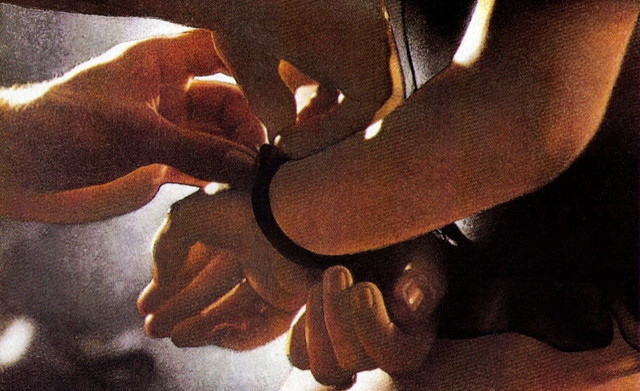
*
p.s. Hey. ** David Ehrenstein, Hi. Whenever I remember anything of my dreams, which is rare, and when real people feature in them, who is actually alive or dead IRL seems to be a non-issue, which is beautiful obviously. ** Sypha, Hi. Yeah, I’m that way about fights and battling in video games. It just feels like a pointless time waster. I’m not a competitive person in real life, and being forced to be one and care about being tougher than some rendered entity in order to advance in an otherwise pleasant fake world is just boring to me. ‘Chairs Missing’ is probably my favorite Wire album. That and ‘Send’. ** _Black_Acrylic, Hi, Ben. Yeah, I do know about National Enquirer Live! I don’t know that I would contextualise it as a theme park. It seems more like a controversy-baiting, more tech-utilising equivalent of a Ripleys Believe-It-Or-Not Museum, but yeah. I’d check it out. ** Misanthrope, I agree! Kayla will probably like listening to ‘Crowd’s’ score if nothing else, yeah. I like Taco Bell for some reason. Eating its shit, I mean. Once in a while. I just read somewhere that it’s the ‘healthiest’ fast food chain, don’t know why. None of which makes it more interesting to work there, I guess. LPS seems like one of those workers who would spit in people’s food? No? I think I read one Ian McEwan book in, like, the 1980s, and I don’t remember it. I think he might be too ‘literary’ for me, but I should find out, I guess. ** Steve Erickson, Interesting Tyler review, props. I have not seen ‘Diamantino’. Is there a reason I should? Curious to see what gets the Palme d’Or tomorrow. There doesn’t seem to be a consensus guess. I guess the Malick and Tarantino are high in the running. ** Corey Heiferman, I have played a stretch of WarioWare, and, yes, I do really like it. My favorites are games that mix ‘puzzle/strategy’ with adventure, but, yeah, WW is big fun and looks gorgeous. You like it? ** Okay. I don’t know many people out there know the films of Walerian Borowczyk. I’m guessing not a huge number? In any case, his work is something very good to know about and experience, so I set up this post, and now I’ll leave you to it. See you tomorrow.




 Now available in North America
Now available in North America 
Walerian Borowczyk’s animated films were always featured at the New York Film Festival. Of his later features “Goto, Island of Love” played there. His other fils have sadly only shown spottily in the U.S. “La Mage” was a big hit in France but never got a proper release here which is a shame as it’s one of Joe’s best films and he’s at his most beautiful in it.
Have just touched the surface but I can already tell this is a great match, exactly where I’m at right now, thanks a million as usual!
My good omen of the day was a normally grumpy video store clerk smiling when he saw me returning 11 x 17 and started gushing over it to the point where the other customers started asking about it. Save any more old ladies?
I’ve never been much of a gamer but enjoy whimsy and button-mashing so I always enjoyed WarioWare much more than whatever other games my much more gamery friends would pick. Of the few adventure puzzle games I’ve played none has come close to Portal.
After convincing myself I failed it turns out I passed my Hebrew test after all! As of today I meet the minimum acceptance requirements but would be required to take Hebrew classes. Hence I’ll sit for the exam again in September to try to test out of Hebrew altogether.
I’ll just drop a huge non-specific question: What do you think of instructing actors about how to do things, ranging from the basics of staying in frame to more esoteric kinds of instructions? I’m still figuring out how much or little bossing around I want to do, but I get the sense that if I get bossy once the possibility of boss-me returning would hover over all future takes. As of now people are shifting around on me in ways that can sometimes wreck the composition, but the moments when everything is aligned without any coaching seem worth it, I guess.
It’s hard to predict the Palme D’or from critics’ buzz and the jury makeup. For instance, I wouldn’t have guessed that a jury headed by Wong Kar-wai would give it to a Ken Loach film and once I saw DHEEPAN, I wondered what they were thinking. (It’s OK, but it’s an action movie with pretensions of having a political message about immigration and what it’s like to be a minority in France.) PARASITE also seems like a strong contender, as does the Almodovar film. The Abdellatif Kechiche film has been mocked mercilessly by the US press. Have the French treated it more respectfully?
The two directors of DIAMANTINO have a campy, lighthearted voice. I’m curious to see that film, which takes a dim soccer star based on Cristiano Ronaldo into international politics. I am also looking forward to Anthology Film Archives’ retrospective on German director Dominik Graf, who has specialized in made-for-TV cop movies and other genre fare, which starts today.
I went to a bookstore in Brooklyn today and saw a new book about the intersection of the ’70s punk and poetry scenes. It has a chapter about you!
I saw Dr. Jekyll and Miss Osbourne just a few weeks ago and yes, it really is unhinged brilliance. Will have to check out more Borowczyk as there seems to be plenty available for DVD rental.
Was at the Generator this evening for their annual graduate show They Had Four Years. I thought one of the more interesting things was Rachel Woodside – Assisted Bathing, an interactive kinetic installation that “explores the performativity of ability/disability.”
Hi Dennis,
Oh man. I forgot about Borowczyk! I saw his Dr. Jekyll movie a few years ago. I need to watch more…
I have another screening I’m hosting at LA’s Poetic Research Bureau tomorrow. If you wouldn’t mind passing the info along, here are the details:
“This Saturday night, 951 Chung King Road once again opens its doors and lends its venue to a new screening series programmed by Nick Toti. This installment will feature the U.S. premiere of ‘the greatest movie that never should have been made by the greatest filmmaker you’ve never heard of’: Zachary Oberzan’s The Great Pretender.
The Great Pretender could be conveniently described as an unauthorized remake of Abbas Kiarostami’s Close-up, but it is actually much, much more than that: an examination of the absurdities of fame and creativity, a concert by an Elvis impersonator, and a guided meditation through the dark corner’s of Oberzan’s neuroses. It is the type of movie that descriptions can do no justice, so come witness it for yourself!”
Link:
http://www.poeticresearch.com/2019/05/may-25-zachary-oberzans-great-pretender.html
Talk soon. Thanks!
Borwoczyk’s work looks totally up my alley, but I don’t think I’ve seen any of his films. Hopefully that will change soon…
Greetings from Berlin, Dennis. I’m battling a cranky network connection here, so it’s been hard for me to enjoy the gig and recent posts. We’ll see if this gets easier. Mostly been dealing with jet lag and hanging with friends so far. But the concert calendar ramps up, hopefully I’ll have more energy tonight!
By the way, Puce Mary plays here next week, at the Volksbuhne, where I saw Crowd.
Bill